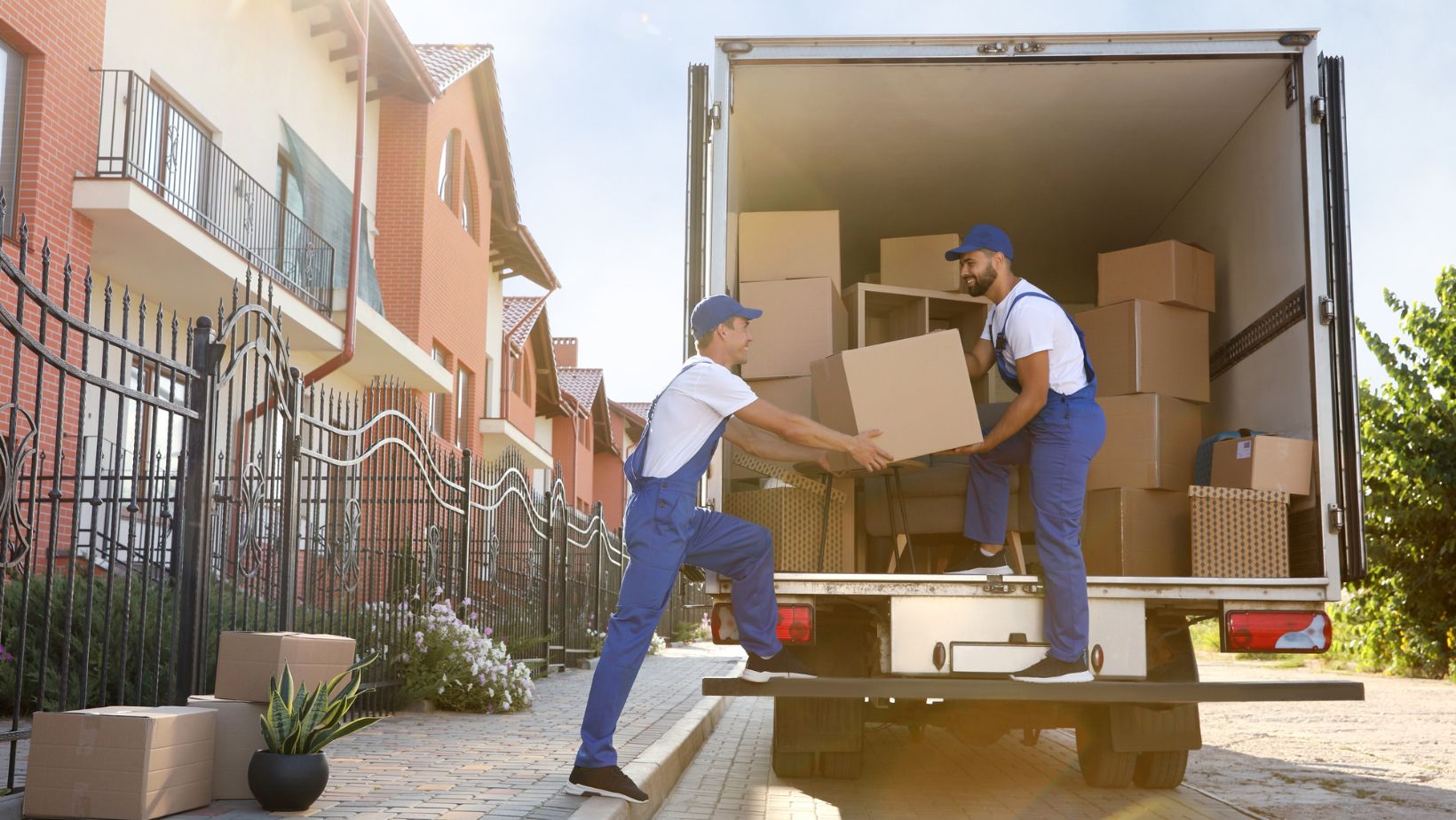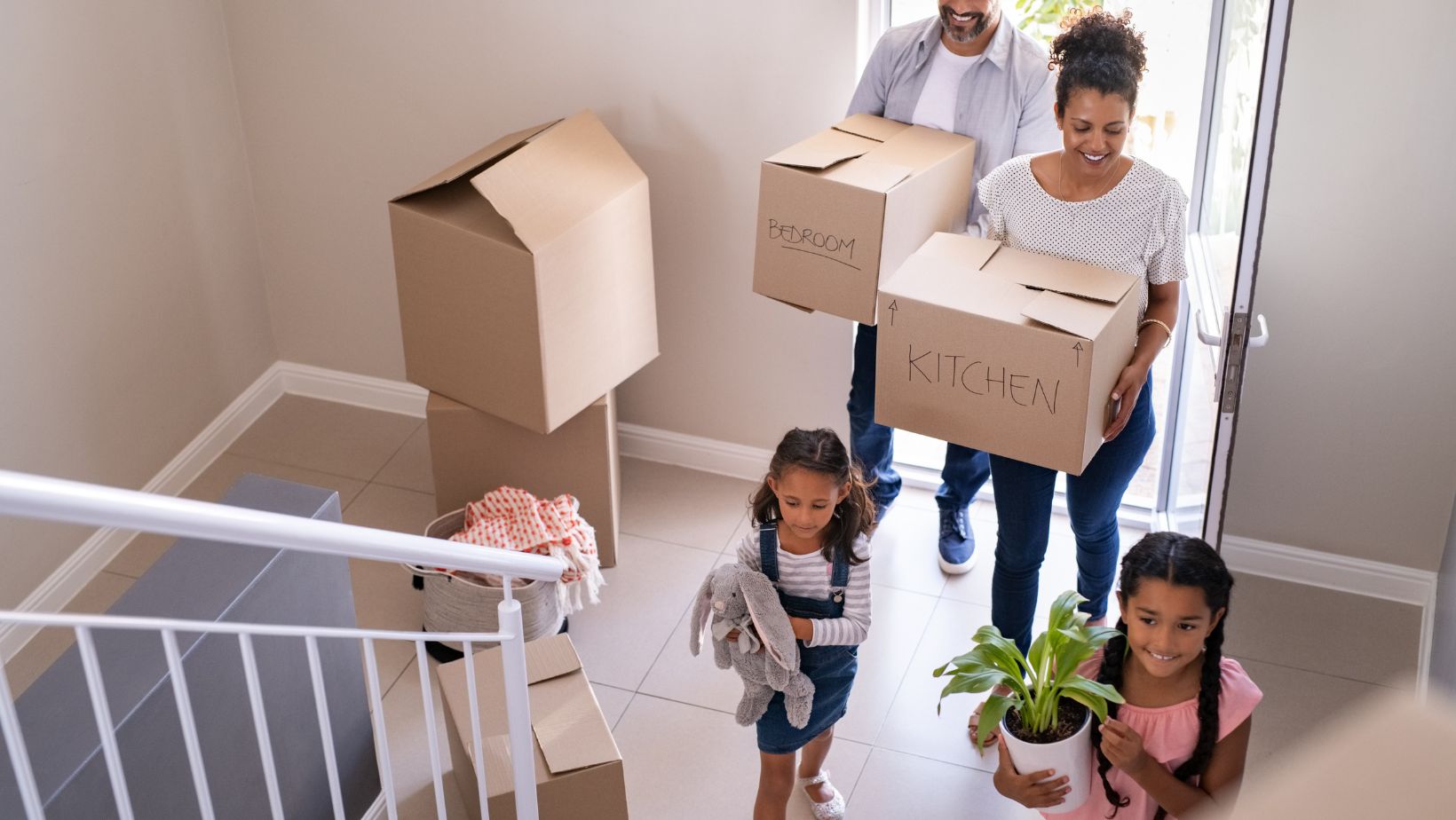
Moving to a new home can be a mix of excitement and stress. The thought of packing up your entire life and relocating it is daunting. It’s not just about transporting items. It’s about ensuring the safe arrival of your cherished belongings and the smooth start of a new chapter.
A seamless transition is crucial. It sets the tone for your life in your new home. This article guides you through making your move as smooth and worry-free as possible, turning a potential hassle into a manageable task.
1. Planning Your Move
Starting your move early is crucial. It is not just about marking a date on the calendar. It is about setting the stage for success. By beginning months or even weeks ahead, you allow yourself time to tackle unexpected challenges. This early start helps to distribute tasks over a longer period, making them feel more manageable.
Creating a detailed moving checklist is a key step. This list should include everything, from gathering packing supplies to finalizing transportation. Having a physical or digital checklist can be a game changer. It helps you keep track of your progress and ensures that no task is overlooked.
Selecting the right date for your move is also vital. It’s not simply picking a day. Consider your work schedule, your family’s commitments, and even local weather patterns. Sometimes, moving on a weekday can be more cost-effective and less chaotic than a weekend move. If relocating to a new city, think about the local events that might impact your move. A carefully chosen date can help in reducing stress and can even be cost-effective.
Planning your move involves more than just physical preparation. It’s about strategic thinking, organizing, and scheduling. By paying attention to these aspects, you transform the moving process into a structured and less overwhelming experience.
2. Choosing A Moving Company
Researching potential moving companies is the first step in ensuring a successful move. Start by seeking recommendations from friends or family who have recently moved. Then, expand your search online. Look for companies with expertise in the type of move you’re planning, whether it’s local or long-distance. It’s important to gather information from a variety of sources to form a well-rounded view of your options.
Comparing services and prices offered by different companies is also important. Not all movers provide the same services, and costs can vary significantly. Request detailed quotes from several companies and compare them. Pay attention to what is included in these quotes, such as packing services or insurance. Remember, the cheapest option isn’t always the best. Balance cost with the quality of services offered.
Checking the reviews and credentials of the moving companies can also be helpful. Look for reviews on independent websites to get unbiased opinions. Also, verify the company’s credentials. Ensure they are licensed and insured. This step provides reassurance that you’re dealing with a reputable company and offers protection in case of any mishaps during the move. Remember, thorough research now can save you from potential issues later.
Consider a moving company like Big Boy Movers. They offer specific services tailored to these regions, ensuring a deep understanding of the local moving challenges and advantages. More information about their services and expertise in these areas can be found at https://www.thebigboymovers.com/locations/salt-lake-city-provo/.
3. Packing Strategies
Effective packing strategies can transform the moving experience:
- Room Labeling In Detail
Assign a unique color or number to each room. Label each box with corresponding colors or numbers. This method streamlines the unloading process, ensuring boxes go to the correct room quickly.
- Prioritizing Daily Essentials
Create a list of items you use daily (toiletries, certain kitchenware, essential clothing). Pack these items last and in clearly marked boxes. This ensures they are the first to be unpacked, reducing disruption to daily routines.
- Choosing Quality Packing Materials
Invest in strong, durable boxes, especially for heavy items like books or fragile items like glassware. Using high-quality packing tape and bubble wrap provides extra security during transport.
- Special Care For Fragile Items
Wrap each fragile item individually in bubble wrap or packing paper. Place them in boxes with plenty of cushioning materials at the bottom, between items, and at the top before sealing.
- Efficient Furniture Disassembly
For large furniture, disassemble pieces where possible. Keep screws, bolts, and other small hardware in labeled ziplock bags, taped to the respective furniture piece. This organization prevents loss and confusion during reassembly.
- Sequential Packing Approach
Begin packing with items you use infrequently. For example, start with out-of-season clothes, decorative items, or books. This leaves everyday items available and reduces clutter.
- Space-Saving Clothing Packing
Roll clothing to save space and prevent wrinkles. Use vacuum-seal bags for bulky items like winter coats or comforters, significantly reducing the space they occupy.
- Careful Electronics Packing
Take clear photos of the back of electronic devices, showing cable arrangements. Where possible, use original boxes for packing electronics. This preserves the proper fit and protection they offer.
- Handling Valuables And Documents
Keep important documents, jewelry, and other valuables in a separate personal bag. If necessary, rent a safety deposit box for extremely valuable items during the move.
- Smart Use Of Space
Fill suitcases, laundry bins, and even appliance interiors with smaller items. This not only saves on boxes but also makes transporting these items more efficient.
- Homemade Packing Materials
Soft goods like blankets, pillows, and towels can double as protective wrapping for fragile items, reducing the need for additional packing materials.
- Comprehensive Inventory
Maintain a detailed inventory of what each box contains. This can be a simple numbered list correlating to numbers on the boxes, helping track items and simplifying the unpacking process.
By following these strategies, you can ensure that your belongings are packed securely and logically, simplifying both the packing and unpacking processes.
4. Managing Moving Day
Managing the moving day effectively can significantly reduce stress. Here’s how to keep things running smoothly:
- Prepare A Moving Day Kit
Besides essentials like snacks and water, include items like chargers, toiletries, a change of clothes, and basic cleaning supplies in your moving day kit. Having these items easily accessible ensures comfort and convenience.
- Maximizing The Early Start
Starting early is more than just about time; it’s about using the day’s energy efficiently. Plan to start as movers arrive, guiding them on priority items and answering any last-minute questions.

- Ensuring Safety With Clear Pathways
Double-check that all paths are clear of obstacles. This not only speeds up the moving process but also prevents potential injuries or damage to your belongings.
- Child And Pet Safety
Having children and pets in a safe, separate space ensures they remain stress-free and out of harm’s way. This also allows movers to work more efficiently without distractions or concerns about safety.
- Organizing Important Documents
Keep a folder with essential documents, like the moving company contract, new home documents, and personal identification, in a safe but accessible place. This ensures peace of mind, knowing that important paperwork is organized and at hand.
- Thoroughness In The Final Walkthrough
In your final sweep, check hidden places like storage areas, top shelves, and under sinks. This ensures that no item, no matter how small, is left behind.
- Maintaining Energy Levels
Regular hydration and snacks are crucial. Plan for meal times, perhaps arranging food delivery to your new home, so you and the movers have the energy to continue working efficiently.
- Effective Communication With Movers
Stay on-site to direct movers, ensuring items go to the right rooms. This reduces rearranging work later and helps the movers work more effectively.
- Importance Of Taking Breaks
Schedule brief breaks to rest and assess progress. Use this time to check off completed tasks and plan the next steps.
By focusing on these detailed strategies, your moving day can be a well-organized, efficient, and stress-reduced experience, paving the way for a positive start in your new home.
5. Settling Into Your New Home
Unpacking priorities can significantly influence how quickly you feel at home. Begin with essential items like bedding, toiletries, and basic kitchenware. This approach allows for immediate functionality in your new space. Next, focus on frequently used items and spaces like the kitchen and bathroom. Delaying less critical items, like decorative pieces or books, gives you time to focus on setting up the most necessary areas first.
Organizing your space is more than just unpacking; it’s about creating a comfortable and functional environment. As you unpack, consider the layout of each room. Arrange furniture and items in a way that maximizes space and suits your lifestyle. Think about the flow of each room—where you’ll spend most of your time and how you’ll use the space. This thoughtful organization upfront saves time and effort in rearranging later.
Adjusting to the new environment takes time. Explore your neighborhood, connect with neighbors, and find local amenities like parks, shops, and restaurants. This exploration helps establish a sense of belonging. Inside your home, personalize your space with photos, artwork, and decor that make it feel truly yours. These touches go a long way in transforming the new house into your home.
6. Post-Move Considerations
After your move, addressing changes in address and notifications is crucial. Update your address with government agencies, banks, and service providers. Inform friends and family of your new address. Also, set up mail forwarding with the postal service to catch any mail sent to your old address. This ensures you don’t miss important correspondence or bills.
Engaging with your new community is equally important. Attend local events or join community groups to meet neighbors and make connections. Explore local amenities and participate in community activities. Volunteering or attending local meetings can also be great ways to integrate into your new environment. These efforts can help you feel more at home and connected in your new community.
7. Handling Utilities And Services
When moving, handling utilities and services is a key step. Before your move, contact utility providers to transfer or set up services at your new home. This includes electricity, water, gas, and internet. Ensure these services are active from your move-in day to avoid any disruptions. It’s also a good idea to research local providers and plans, especially for internet and cable, to find the best fit for your needs and budget.
Considerations for utilities like electricity, water, and gas often depend on local regulations and providers. Research the utility providers in your new area and understand their service setup processes. For the internet, assess your needs in terms of speed and capacity, especially if you work from home or have high usage. Arrange these services well in advance to ensure a smooth start in your new home.
8. Navigating Legal And Financial Changes
When relocating, updating your legal documents is crucial. This includes changing your address on your driver’s license, voter registration, and with the IRS (Internal Revenue Service). Also, update your address on any legal documents, such as wills or powers of attorney. Ensuring that these documents reflect your current address is vital for legal compliance and for any future legal or government correspondence.

Financial considerations in a new locality also demand attention. This includes understanding the cost of living in your new area, which might impact your budgeting. You should also notify your bank and credit card companies of your address change to avoid any issues with your accounts. If moving to a different state, familiarize yourself with the local tax laws, as they can vary significantly and affect your income and expenditure.
In Conclusion
Moving to a new home marks a significant change, requiring careful planning and organization. Throughout this guide, we’ve covered essential aspects, from early planning and selecting a moving company to packing and settling in. Remember, updating legal documents and financial considerations in your new area is crucial for a seamless transition.
Engaging with your community and understanding your new environment will help you feel at home sooner. By meticulously following these steps, you ensure that your move is not just about relocating belongings but about starting a new chapter in your life with ease and confidence.

